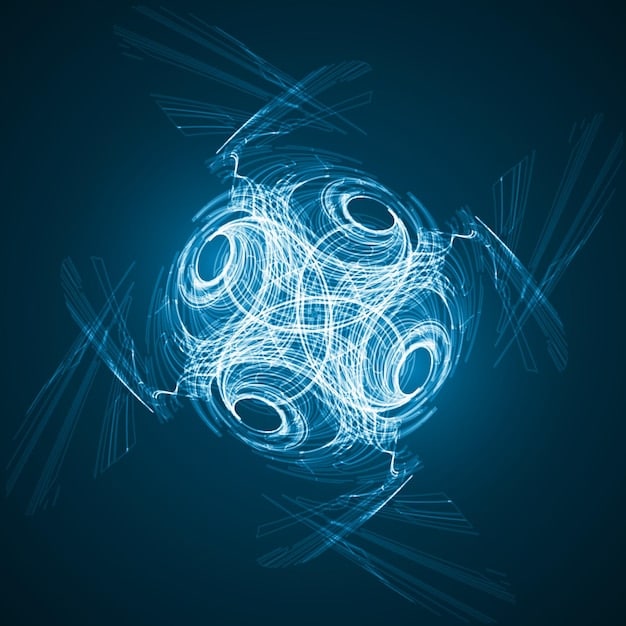Is Telekinesis Possible? New Experiments in 2025 Reveal Surprising Results

Is Telekinesis Possible? Recent experiments in 2025 are challenging established scientific views. These groundbreaking investigations are focused on understanding the potentials and limitations of telekinetic abilities under controlled conditions.
The concept of telekinesis, moving objects with the mind, has long been relegated to science fiction and paranormal speculation. However, is telekinesis possible? New experiments challenge conventional science in 2025, pushing the boundaries of what we understand about the human mind and its potential interaction with the physical world. This article delves into these fascinating developments, exploring whether 2025 could be the year that changes everything we thought we knew about telekinesis.
Could these experiments provide definitive proof, or do they simply open new avenues for exploration? Join us as we examine the evidence and consider the implications of these groundbreaking studies on whether is telekinesis possible?
Is Telekinesis Possible? New Experiments Challenge Science
The question of whether is telekinesis possible? has captivated scientists and laypersons alike for decades. Traditionally dismissed as pseudoscience, advancements in technology and evolving perspectives on consciousness have led to renewed interest in exploring this phenomenon. Modern experiments are now being conducted with rigorous methodologies, aiming to either validate or debunk the claims surrounding telekinetic abilities.
The Methodologies Behind Telekinesis Research
Contemporary research into whether is telekinesis possible? involves sophisticated techniques to minimize bias and ensure quantifiable results. These include:
- Using Faraday cages to block electromagnetic interference.
- Employing randomized, double-blind study designs.
- Measuring subtle changes in physical systems with high-precision instruments.
By reducing external “noise” and implementing stringent controls, researchers seek to isolate potential mental influences on physical objects. This meticulous approach is crucial in the quest to determine whether is telekinesis possible.

The ultimate goal is to accumulate empirical data that fosters genuine understanding. This quest to evaluate whether is telekinesis possible? using scientific rigor is changing the way the world is looking at the unexplainable.
Examining Key Experiments Challenging Conventional Science
A driving force behind ongoing discussions on is telekinesis possible? comes from certain pivotal experiments in 2025 that challenge the existing scientific dogma. These experiments didn’t just rehash old concepts; they introduced innovative approaches and obtained insights that are genuinely different.
Experiment 1: Quantum Entanglement and Telekinesis
One notable study explores the potential link between quantum entanglement and telekinesis. In this experiment, researchers investigate whether entangled particles can be influenced by human intention, creating a bridge between the quantum and macroscopic worlds. This approach introduces a new perspective on whether is telekinesis possible?
Experiment 2: Brain-Computer Interfaces and Telekinetic Control
Another study focuses on brain-computer interfaces (BCIs) to improve telekinetic control. Participants use BCIs to amplify their mental intentions, aiming to move physical objects with greater precision and force. Here’s what they found:
- BCIs can significantly reduce the mental effort required for telekinetic actions.
- The use of BCIs can enhance the control and accuracy of telekinetic movements.
- Real-time feedback systems are crucial for refining telekinetic skills through BCIs.
These findings not only provide additional approaches to consider if is telekinesis possible?, but also suggest an expansion of capabilities through technology.
These experiments represent significant steps in finding out whether is telekinesis possible?, thus paving the way for additional research as well as applications for it as well.
The Role of Quantum Physics in Telekinesis Research
The intersection of quantum physics and telekinesis research provides theoretical frameworks that are helping to give some explanation to various telekinetic phenomena. By the use of these principles, one can begin to understand more thoroughly if **is telekinesis possible?**.
- Quantum physics provides a theoretical basis for understanding non-local interactions.
- Understanding connections between intentions and physical events can lead to a better realization of telekinesis.
- Quantum entanglement provides another framework for the mechanisms of telekinesis.
This can provide additional information for those wondering if is telekinesis possible?, since these potential discoveries might lead to advances in our comprehension, which may then influence additional research and experiments.

In totality, quantum physics provides vital principles that shape the discussion and exploration of is telekinesis possible, enabling deeper understandings.
Criticisms and Skepticism in the Field of Telekinesis
Despite some of the exciting results yielded in the study of if is telekinesis possible?, it’s important to recognize it has attracted a whole host of skepticism as well as criticisms. A huge bulk of this hesitancy results from what has been observed historically with the many claims of telekinesis, many of which have turned out to be either hoaxes or the result of scientific mistake.
Replication Challenges
Among the most substantial criticisms regarding telekinesis relates to the struggle when one is attempting to reproduce experimental findings. Many positive outcomes are difficult to replicate by independent labs with similar testing facilities, thus creating concerns relating to the reliability of the information. This concern causes difficulties in determining if **is telekinesis possible?**.
Alternative Explanations
Critiques usually point to alternative, non-paranormal explanations that could explain positive results. Confounding variables like electromagnetic interference, subtle vibrations or statistical anomalies might potentially affect the end results, leading to misinterpretations. As a result, understanding if **is telekinesis possible?** is more difficult to ascertain.
Acknowledging such skepticism along with criticism is essential for maintaining integrity through scientific exploration and analysis, and that applies even to the topic of determining whether is telekinesis possible?. These obstacles emphasize the need when it comes to adhering to methodological rigor in addition to thorough evaluation in telekinesis experimentation to be able to separate genuine outcomes from artifacts of testing.
Future Directions and the Potential of Telekinesis in 2025
Even with all the challenges concerning the area related to if is telekinesis possible?, ongoing research, in addition to advancements in technology, point to some exciting directions for the future. When we get to 2025, we’re likely going to see improvements in experimental processes, far more rigorous testing, and also more insights into the principles in which telekinesis is involved.
Technological Advances and Telekinesis
Technological advancements are pivotal in advancing telekinesis research. Better sensors, much more powerful computers and advanced brain-computer interfaces stand to improve our capacity when it comes to precisely measuring as well as manipulating potential telekinetic effects. As the future turns into the present, these tech-based advances may really clarify to us if **is telekinesis possible?**.
Interdisciplinary Collaborations
If you want to advance the study of can is telekinesis possible?, interdisciplinary cooperations are critical, bringing scientists coming from quantum physics, neuroscience but also materials science so that people are able to share comprehension and also understanding. These joint efforts is able to produce new insights and also techniques which might revolutionize how one approaches the research.
| Key Point | Brief Description |
|---|---|
| 🧠 Quantum Physics | Offers theoretical frameworks for understanding non-local interactions. |
| 🧪 Replication Challenges | Reproducing experimental findings is sometimes difficult. |
| 🤝 Interdisciplinary Teams | These bring varied skills for investigating telekinesis. |
| 🔬 Technological Improvements | Sensors, computers, and BCIs enhance telekinetic research. |
Frequently Asked Questions
The 2025 experiments use much better tech, like high-resolution sensors and brain-computer interfaces, to closely track any movements. These innovations reduce the effect of typical hindrances, helping scientists look into whether is telekinesis possible? more accurately.
Telekinesis refers to the hypothetical ability to move objects with one’s mind, without any physical contact or other known physical means. It’s a concept that has been explored in science fiction and paranormal studies.
While there have been numerous claims and studies, conclusive scientific evidence supporting telekinesis remains elusive. Many alleged cases have been debunked as hoaxes or attributed to other phenomena.
Quantum physics provides possible theoretical frameworks through ideas like quantum entanglement, possibly giving non-local interactions. However, there isn’t definitive proof that links quantum phenomena with telekinesis in a scientifically conclusive way.
Future experiments should focus on better experimental designs, especially double-blind and randomized tests to reduce bias. Also critical is the use of more advanced tech such as better sensors and BCIs to closely watch as well as measure all telekinetic effects.
Conclusion
To summarize, even though the question of whether is telekinesis possible? new experiments challenge conventional science in 2025 with some of these new innovations which are setting out to test previous boundaries. Even though challenges are indeed still here, on-going research along with technological breakthroughs do highlight potential directions for future investigation.
Eventually, by diligently merging scientific analysis and interdisciplinary effort, scientists can continue to get more information regarding those phenomenon, moving toward whether understanding or possibly perhaps disproving this centuries-old question.





